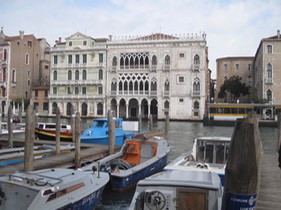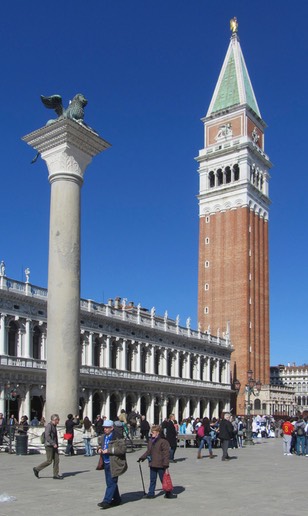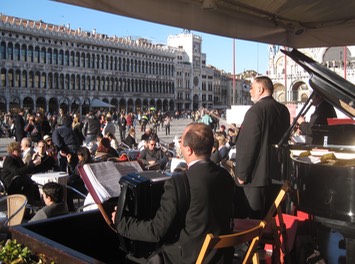
Naming a climatic phenomenon seems to make it somehow easier to live with awesome consequences - as we learn frequently after each US hurricane. This may be among many enduring legacies from ancient Venice where "Acqua Alta" cheerily adjusts residents’ diaries, and civic programmes alike.
Acqua Alta, or 'high water' occurs frequently in Venice. Reasonable predictability allows church bells to announce the phenomenon day or night, a few hours in advance of the tide reaching critical levels. Venetians have learned to live with this inconvenience! Goods deliveries by boat and sack barrow adds heft to weighty work. Strong men in waders keep the engine rooms of restaurants, hotels or businesses supplied and visually contrast with the effete aesthetic of the Byzantine and Moorish influences in the Venetian architecture.

The decision to found a city on marshland in this lagoon was taken as a 5th century response to plundering barbarians exploiting the remnants of Roman Empire. These refugee settlers quickly built substantial trade, exchanging incense, silks, and spices from Constantinople and the east, for salt, fish and wheat from the west. A merchant city emerged on the Island of Torcello which thrived for over two centuries until the growing population seeking drier ground moved in 814AD to the high bank or 'Rivo Alta' - the present site of the Rialto markets.
Strangely the siting of the first Doge's Palace and the Basilica di San Marco paid less attention to these existing ground levels. The low site around what is now Piazza San Marco made it immediately vulnerable to flooding resulting in one early ambitious but thankfully unrealised proposal by the forty-second Doge (Pietro Ziani) in 1224AD to relocate the entire city to the recently conquered Constantinople.
Two centuries later, Venetians demonstrated innovative environmental engineering and diverted the major rivers flowing into the lagoon to prevent silt build-up and in effect deepened the lagoon. By 1505 'Magistrato alle Acque' was established as the agency to control activity and industry surrounding the lagoon waters and in 1604, Venice introduced new taxes to defray costs of flood relief. In spite of early environmental awareness, artesian wells were again sunk into the lagoon during the 20th century, and Venice began to subside. This extraction method was banned in the 1960s, and recent studies suggest that the city is no longer sinking.

The need for timber piling driven deep into the marshland ensured Venetian architects were always conscience of weight in construction. Heavy stone was duly restricted to prestigious facades fronting canals. Rendered brick and timber framing were used for lesser elevations in an architectural equivalent of another Venetian legacy - the mask.
After a long period of official disapproval carnival masks were reintroduced to Venice in 1979 and now compete strongly with Murano glass for tourist attention. The grotesque and beautiful masks were historically charged with symbolic significance defining status and wealth throughout the long medieval winter Carnival months. Large noses, high brows and slanting eyes signified intelligence or age and high status, while low forehead, bulging eyes and long beak shaped noses implied stupidity.
A particularly ghoulish long beak mask -the 'plague doctor' - was not a carnival mask but was intended as a defence against the plague. The full face 'Bauta' mask with no mouth opening allowed talking and eating behind an exaggerated projecting chin. These masks together with a black cape ensured necessary anonymity at political events. Many legacies of Venice reach deep into modern culture but mercifully today’s 'secret ballots' require less theatrical measures.
583 words